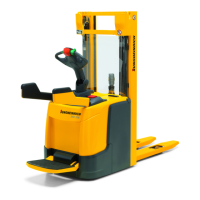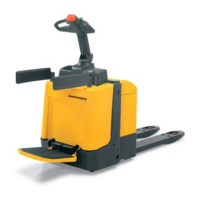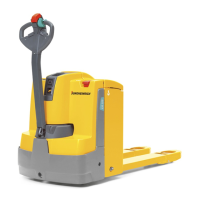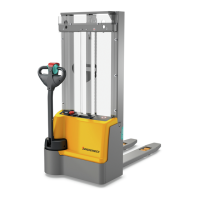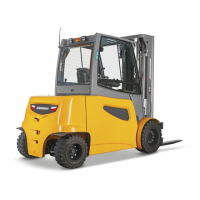4.9 Load handler raise/lower
WARNING!
Accident risk when lifting and lowering
Other people can be injured in the truck's hazardous area.
The hazardous area is defined as the area in which people are at risk from the
movement of the truck including the load handler, etc. This also includes areas which
can be reached by falling loads, operating equipment, etc.
Apart from the driver (in the normal operating position) there should be no other
people in the truck's hazardous area.
u
Instruct other people to move out of the hazardous area of the truck. Stop working
with the truck if people do not leave the hazardous area.
u
If people do not leave the hazardous area despite the warning, prevent the truck
from being used by unauthorised people.
u
Only carry loads that have been secured and positioned in accordance with
regulations. Use suitable precautions to prevent parts of the load from tipping or
falling down.
u
Never exceed the maximum loads specified on the capacity plate.
u
Never stand underneath a raised load handler.
u
Do not stand on the load handler.
u
Do not lift other people on the load handler.
u
Never reach or climb into moving truck parts.
u
Do not climb onto parts of the building or other trucks.
NOTICE
Adapt a slower speed when stacking and retrieving.
NOTICE
Lift heights > 1800 mm are only enabled when the support arms have been lowered
manually. This ensures the truck remains stable. Above a lift height of 1800 mm, the
support arms can no longer be raised (ERC 212z-216z only).
Z
Hydraulic function lock: The default setting is lifting in pedestrian mode only when
the tiller is in the travel zone (F); in rider mode the operator platform must also be
occupied. This does not affect lowering.
The default setting can be changed via a parameter, .
93
04.19 en-GB

